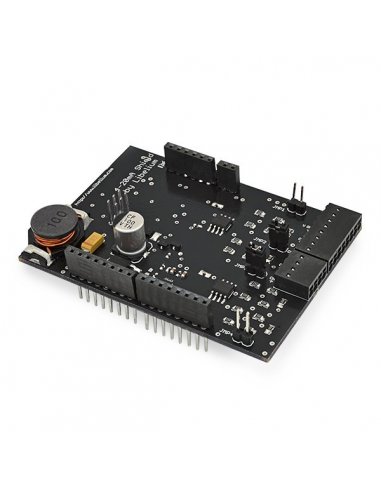-
ARDUINO
- RASPBERRY
- MICRO:BIT
- KITS
-
COMPONENTES
-
Resistências Elétricas
- Kit de Resistências
- Resistências 1% 125mW
- Resistencias 1% 250mW
- Resistencias 1% 500mW
- Resistencias 1% 600mW
- Resistências 1% 1W
- Resistencias 1% 2W
- Resistências 5% 125mW
- Resistencias 5% 250mW
- Resistencias 5% 500mW
- Resistências 5% 1W
- Resistencias 5% 2W
- Resistencias 5% 3W
- Resistências Potência
- Resistências Várias
- Redes Resistencias
- Termistores
- Trimmers
- Trimmers 3296
- Joysticks
- Botões
- Potenciometro slider
- Potenciometros Rotativos
- Potenciometro Multivolta
- Potenciometros Motorizados
- MODULOS
- SENSORES
- ROBÓTICA
- IMPRESSÃO 3D
-
FERRAMENTAS
Ferramenta Eletronica
- Acessórios
- Analisador Logico
- Alicates para Eletronica
- Berbequins
- Caixas Arrumação
- Chaves de Precisão
- Chaves Ajuste
- Extensões
- Fita Isoladora
- Fonte de Alimentação
- kit Ferramentas
- Lupa Eletronica
- Aparelhos de Medida, Multímetros e Outros
- Osciloscopios
- Pinças para Eletrónica
- Pontas de Prova
- Material Soldadura
- Spray de Limpeza
- Tornos e Suportes
- PROMOÇÕES
- CHEQUE PRENDA
4-20 mA (Current Loop) Sensor Board for Arduino, Raspberry Pi and Intel Galileo
4-20 mA (Current Loop) Sensor Board for Arduino, Raspberry Pi and Intel Galileo
Stock atualizado em tempo real e entregas em 24h-48h.
Compre com confiança!
Descrição
4-20 mA (Current Loop) Sensor Board for Arduino, Raspberry Pi and Intel Galileo
The 4-20 mA Current Loop Board is one of the most robust sensor signaling standard. Current loops are ideal for data transmission because of their inherent insensitivity to electrical noise. In a 4-20 mA current loop, all the signaling current flows through all components; the same current flows even if the wire terminations are less than perfect. All the components in the loop drop voltage due to the signaling current flowing through them. The signaling current is not affected by these voltage drops as long as the power supply voltage is greater than the sum of the voltage drops around the loop at the maximum signaling current of 20 mA.
Transmitting sensor information via a current loop is particularly useful when the information has to be sent to a remote location over long distances (500 meters, or more). The loop operation is straightforward: a sensor output voltage is first converted to a proportional current, with 4 mA normally representing the sensor zero-level output, and 20 mA representing the sensor full-scale output. Then, a receiver at the remote end converts the 4-20 mA current back into a voltage which in turn can be further processed by a computer or display module.
4-20 mA Current Loop
Type: Analog
Media: Twisted pair
No. of channels: 4
Distance: 900 m
Supply: 5-24V
Warnings:
The 4-20 mA Board is not designed to supply industrial devices such as PLC's and thermostats. It must be used only to supply sensors.
If you are going to use the 4-20 mA Board with Raspberry Pi, you must supply your sensors with your own power supply.
The 4-20 mA board uses the digital 5 pin to enable/disable the 24 V output.
In Arduino and Raspberry Pi, the analog pins 5 and 4 are used by the i2c bus, so it is not possible to use them at the same time.
Tradução em Português brevemente disponível!



